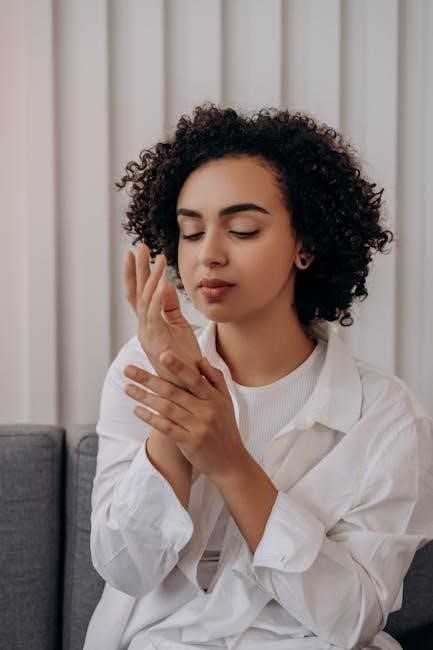Fragrance concentration determines scent longevity and strength, with higher concentrations offering richer aromas and longer-lasting results, essential for personalizing your fragrance experience.
1.1 Understanding Fragrance Concentration
Fragrance concentration refers to the percentage of essential oils in a perfume, determining its strength and longevity. Higher concentrations, like Parfum, contain more oils, offering intense, long-lasting scents, while lower concentrations, such as Eau Fraîche, are lighter and fresher. The balance of essential oils, aroma compounds, and solvents like alcohol or water defines the concentration. This measurement impacts how the fragrance evolves on the skin, with higher concentrations lingering longer and unfolding complex notes. Understanding concentration helps users choose scents tailored to personal preferences, ensuring the right intensity for everyday wear or special occasions. It’s a crucial factor in crafting a fragrance experience that suits individual lifestyles and tastes.
1.2 Importance of Fragrance Strength
Fragrance strength is vital as it determines the longevity and intensity of a scent, directly impacting the wearer’s experience. Stronger concentrations, like Parfum, offer a rich, enduring aroma, making them ideal for special occasions or colder seasons. Conversely, lighter options, such as Eau Fraîche, provide a subtle, refreshing scent perfect for everyday use or warmer weather. The right strength enhances personal style, boosts confidence, and ensures comfort, as overly potent fragrances can overwhelm. Balancing strength with personal preferences and skin type ensures a pleasant experience, making fragrance strength a key factor in selecting the perfect perfume for any scenario or lifestyle.
1.3 Brief History of Perfume Concentrations
The concept of fragrance concentration dates back to ancient civilizations, where aromatic oils and essences were used for rituals and personal adornment. In Egypt, Greece, and Rome, perfumes were often concentrated blends of herbs and spices. The modern era saw the rise of distinct concentrations, such as Eau de Cologne, which emerged in 18th-century Europe. Over time, perfumers developed standardized concentrations like Eau de Toilette, Eau de Parfum, and Parfum, each catering to different preferences and occasions; This evolution reflects advancements in perfumery techniques and the growing diversity of fragrance applications, enabling users to choose scents that suit their lifestyles and personal tastes.
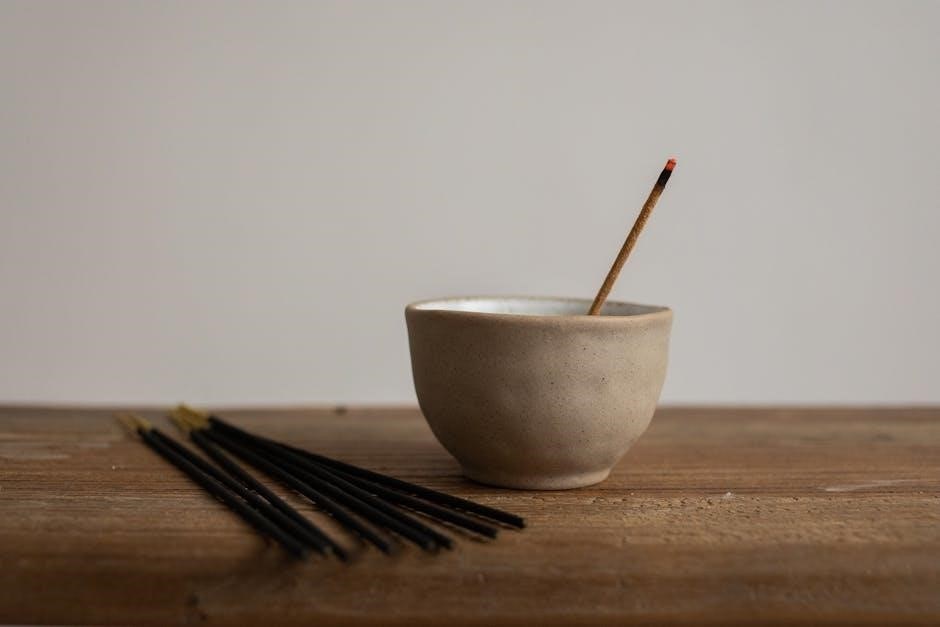
Common Fragrance Concentrations
Fragrances are categorized into concentrations like Eau Fraîche, Eau de Cologne, Eau de Toilette, Eau de Parfum, and Parfum, each varying in essential oil content and longevity.
2.1 Eau Fraîche
Eau Fraîche is the lightest fragrance concentration, typically containing 1-3% essential oils. It offers a subtle, refreshing scent with minimal longevity, lasting about 1-2 hours. Ideal for everyday use, Eau Fraîche is perfect for warm weather or those preferring delicate fragrances. Its lightweight nature makes it suitable for all skin types, especially sensitive skin. Often featuring citrus or floral notes, it provides a clean, crisp aroma. Eau Fraîche is a popular choice for its affordability and versatility, making it a great option for casual wear or layering with other products. Its gentle presence ensures it doesn’t overpower, offering a fresh, airy sensation throughout the day;
2.2 Eau de Cologne
Eau de Cologne is a classic fragrance concentration, typically containing 3-5% essential oils. It offers a fresh, vibrant scent with moderate longevity, lasting 2-4 hours. Originating in Cologne, Germany, this concentration is known for its citrus-based compositions, such as lemon, orange, or bergamot. Eau de Cologne is ideal for daytime wear, especially in warmer climates, as it provides a refreshing and invigorating aroma. Its moderate strength makes it suitable for everyday use, appealing to those who prefer a noticeable but not overpowering fragrance. Perfect for casual occasions, Eau de Cologne is a timeless choice, balancing affordability and lasting power, making it a popular option for both men and women seeking a light, energetic scent.
2.3 Eau de Toilette (EDT)
Eau de Toilette (EDT) is a popular fragrance concentration, containing 5-15% essential oils. It offers a lighter, more subtle scent compared to Eau de Parfum, with a longevity of 4-6 hours. EDT is ideal for everyday wear, making it a versatile choice for various occasions; Its moderate strength ensures it is not overpowering, appealing to those who prefer a delicate aroma. Often used in both men’s and women’s perfumes, EDT is available in a wide range of scents, from floral to citrus. This concentration is perfect for daytime use, as it provides a fresh and clean fragrance without being overwhelming. Its balance of scent and longevity makes EDT a favorite for many perfume enthusiasts seeking a reliable and elegant option.
2.4 Eau de Parfum (EDP)
Eau de Parfum (EDP) is a highly popular fragrance concentration, containing 10-20% essential oils. It offers a rich, long-lasting scent that typically lasts 6-8 hours on the skin. EDP is more intense than Eau de Toilette but lighter than parfum, making it suitable for both daytime and evening wear. This concentration is ideal for those who prefer a noticeable yet not overwhelming aroma. EDP is widely used in both men’s and women’s perfumes and is available in a variety of fragrances, from floral to woody notes. Its balance of strength and longevity makes it a versatile choice for everyday use and special occasions alike. EDP is a great option for those seeking a refined and enduring fragrance experience.
2.5 Parfum (Extrait de Parfum)
Parfum, also known as Extrait de Parfum, is the most concentrated and luxurious fragrance option, typically containing 20-30% essential oils. This high concentration results in a long-lasting scent that can linger on the skin for 8-12 hours or more. Parfum is often used by perfume enthusiasts who appreciate its rich, complex aroma and depth. It is usually reserved for special occasions due to its potency and higher cost. The intense fragrance is delivered in smaller bottles, as less is needed for a strong impact. Parfum is ideal for those who desire a sophisticated and enduring scent, making it a hallmark of luxury in the world of perfumery.

Characteristics of Each Concentration
Fragrance concentrations vary in strength and longevity, ranging from light Eau Fraîche to intense Parfum, each offering unique characteristics suited for different preferences and occasions.
3.1 Eau Fraîche: Lightweight and Refreshing
Eau Fraîche is the lightest fragrance concentration, typically containing 1-3% essential oils. It offers a subtle, refreshing scent that lasts for a short duration, making it ideal for everyday use. Often featuring citrus or floral notes, Eau Fraîche provides a clean and invigorating aroma perfect for warm weather or those who prefer a delicate fragrance. Its fleeting nature makes it a great choice for people with sensitive skin or for occasions where a heavy scent might be overpowering. Unlike stronger concentrations, Eau Fraîche does not linger long, ensuring a light, airy fragrance experience that is both uplifting and easy to wear throughout the day.
3.2 Eau de Cologne: Citrus and Fresh Scents
Eau de Cologne is a fragrance concentration with a typically 3-5% essential oil content, known for its citrus and fresh scents. Originating in the 18th century, it is characterized by its invigorating and revitalizing aroma, often featuring notes of lemon, orange, or bergamot. This concentration is lighter than Eau de Toilette but longer-lasting than Eau Fraîche, making it suitable for everyday use. Its fresh, airy quality makes it ideal for warm weather or those who prefer a subtle yet uplifting fragrance. Eau de Cologne is popular for its ability to provide a clean, crisp scent that fades gradually throughout the day, offering a refreshing experience without overwhelming the senses.
3.3 Eau de Toilette: Everyday Use
Eau de Toilette (EDT) is a popular fragrance concentration, typically containing 5-15% essential oils, making it suitable for everyday use. Its moderate strength and longevity of 4-6 hours make it ideal for daytime wear or casual occasions. EDT strikes a balance between subtlety and presence, offering a fresh, clean scent that is not overpowering. It is widely used for its versatility, as it complements various lifestyles and preferences. Many find EDT perfect for office environments or daily activities, as it provides a pleasant aroma without being intrusive. Its widespread appeal lies in its ability to offer a refined yet approachable fragrance experience, catering to those who desire a noticeable yet understated scent throughout the day.
3.4 Eau de Parfum: Long-Lasting and Rich
Eau de Parfum (EDP) is a highly sought-after concentration, typically containing 15-25% essential oils, offering a rich and long-lasting fragrance experience. It is known for its depth and complexity, with a longevity of 6-8 hours on the skin. EDP is perfect for evening wear or special occasions, as its intense aroma lingers elegantly without being overpowering. The higher concentration allows the fragrance to evolve, revealing base notes over time. This makes EDP a favorite for those who appreciate a sophisticated and enduring scent. Its richness and staying power make it a worthwhile investment for fragrance enthusiasts seeking a luxurious experience.
3.5 Parfum: The Most Concentrated Option
Parfum, also known as Extrait de Parfum, is the most concentrated fragrance option, typically containing 20-30% essential oils. This high concentration results in a deep, rich scent with exceptional longevity, often lasting up to 8 hours or more. Parfum is cherished by perfume enthusiasts for its complex, evolving aroma that reveals subtle notes over time. Ideal for special occasions or evening wear, it is a luxurious choice that offers a sophisticated fragrance experience. Due to its potency, Parfum is applied sparingly, making it a worthwhile investment for those who appreciate intense, long-lasting scents.
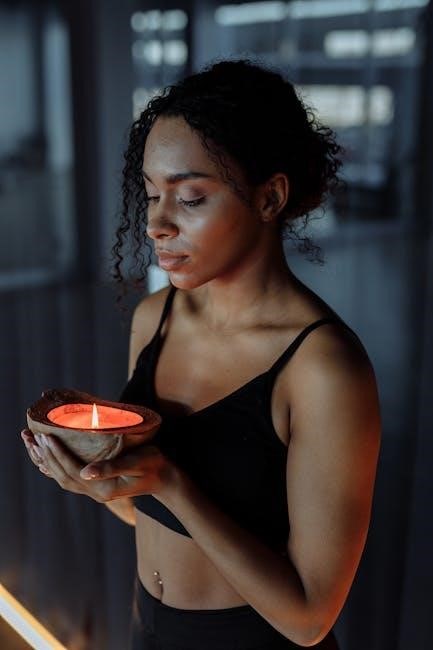
Factors Influencing Fragrance Concentration
Fragrance concentration is influenced by essential oil percentage, skin type, longevity, season, and personal preference, ensuring the scent suits various occasions and individual needs effectively.
4.1 Essential Oil Percentage
The percentage of essential oils in a fragrance significantly impacts its concentration and longevity. Higher concentrations, such as Eau de Parfum (EDP) and Parfum, contain more essential oils, resulting in a richer, more intense scent that lasts longer on the skin. Conversely, lower concentrations like Eau de Cologne have less essential oil, making them lighter and shorter-lasting. The quality and blend of these oils also play a role, as premium ingredients can enhance both strength and duration. Balancing the essential oil percentage is crucial to achieving the desired fragrance intensity and longevity, ensuring the scent evolves beautifully throughout the day.
4.2 Longevity on Skin
Fragrance longevity on skin varies based on concentration, with higher concentrations like Parfum lasting up to 6-8 hours, while Eau Fraîche fades within 2 hours. Skin type also affects longevity; oily skin retains scents longer than dry skin. Application method matters too—applying fragrance to pulse points can extend its life. Environmental factors, such as humidity and temperature, influence how long a scent lingers. Proper storage of fragrances, away from light and heat, helps preserve their strength and longevity. Understanding these factors helps users choose the right concentration for their needs, ensuring a consistent and enjoyable fragrance experience throughout the day or evening.
4.3 Seasonal Preferences
Seasonal preferences significantly influence fragrance concentration choices. In warmer months, lighter concentrations like Eau Fraîche or Eau de Cologne are favored for their refreshing qualities. Conversely, in colder seasons, richer fragrances such as Eau de Parfum or Parfum are preferred for their warmth and longevity. Citrus and floral notes are popular in summer, while oriental and amber scents dominate winter. This seasonal variation reflects how people adapt fragrances to complement their environment and activities. Lighter scents are ideal for daytime use, while deeper concentrations suit evening wear or special occasions. Understanding seasonal preferences helps in selecting the perfect fragrance to match the time of year and personal style.
4.4 Personal Skin Type
Personal skin type plays a crucial role in determining the ideal fragrance concentration. Sensitive skin often benefits from lighter concentrations, such as Eau Fraîche or Eau de Toilette, to minimize irritation. Dry skin may prefer richer formulas like Eau de Parfum or Parfum, as these tend to last longer and moisturize the skin. Oily skin, on the other hand, can handle stronger concentrations without overwhelming the senses. Understanding your skin type helps in selecting a fragrance that complements your natural chemistry, ensuring a pleasant and long-lasting scent experience. Balancing skin type with fragrance concentration enhances wearability and personal satisfaction, making it a key factor in perfume selection.
4.5 Occasion and Usage
The occasion and intended use of a fragrance significantly influence the choice of concentration. For everyday wear, lighter options like Eau de Toilette are ideal, providing a subtle scent that lasts moderately. Formal events or evening wear often call for richer concentrations such as Eau de Parfum or Parfum, which offer depth and longevity. Casual outings may suit Eau de Cologne or Eau Fraîche for a fresh, airy feel. Layering fragrances with complementary scented products can enhance the experience. Consider the setting and duration of the event, as well as personal comfort, to select the most appropriate concentration. This ensures the fragrance complements the occasion without being overpowering, creating a memorable impression.
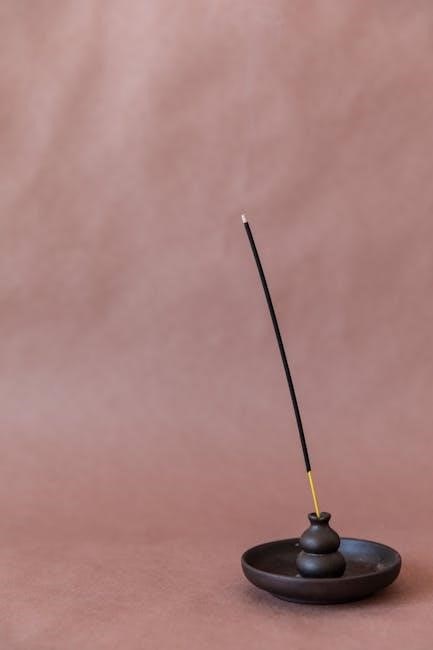
How to Choose the Right Concentration
Choosing the right fragrance concentration involves considering personal preferences, occasion, and skin type. Higher concentrations offer longer-lasting scents, while lighter options are ideal for everyday wear.
5.1 Skin Type Considerations
When selecting a fragrance concentration, skin type plays a crucial role. Sensitive skin may react adversely to high concentrations, making Eau Fraîche or Eau de Cologne more suitable. Oily skin can handle richer scents like Eau de Parfum, while dry skin benefits from the moisture-retaining properties of Parfum. Fragrance longevity also varies with skin type; oily skin tends to hold scents longer, whereas dry skin may require reapplication. Understanding how your skin interacts with fragrance can help tailor your choice, ensuring comfort and optimal scent performance. This personalized approach enhances the overall fragrance experience, making it more enjoyable and long-lasting.
5.2 Seasonal Variations
Seasonal variations play a significant role in choosing the right fragrance concentration. During summer, lighter options like Eau Fraîche or Eau de Cologne are preferred for their refreshing and non-overpowering qualities. In contrast, colder months call for richer, longer-lasting scents such as Eau de Parfum or Parfum, which provide warmth and depth. Spring and autumn offer a middle ground, where moderate concentrations like Eau de Toilette can be ideal. Understanding how fragrance concentration interacts with seasonal changes ensures a more enjoyable and appropriate scent experience throughout the year. This tailored approach enhances the versatility of fragrances, making them suitable for any time of year.
5.3 Day vs. Evening Wear
Choosing the right fragrance concentration depends on whether it’s for daytime or evening use. Daytime wear often calls for lighter, fresher scents like Eau Fraîche or Eau de Cologne, which are subtle and refreshing. These concentrations are ideal for everyday activities, as they are not overpowering. In contrast, evening wear typically suits richer, more intense fragrances such as Eau de Parfum or Parfum, which leave a lasting impression. The stronger notes in evening fragrances complement the sophistication of nighttime events or special occasions. Balancing fragrance concentration with the time of day ensures a harmonious and appropriate scent experience, enhancing confidence and personal style.
5.4 Personal Preference
Personal preference plays a significant role in selecting the ideal fragrance concentration. Some individuals prefer subtle, fresh scents like Eau Fraîche or Eau de Cologne, while others enjoy the depth and longevity of Parfum or Eau de Parfum. Fragrance strength and longevity should align with one’s lifestyle and personal taste. For instance, those who favor discretion may opt for lighter concentrations, whereas others who enjoy making a statement might choose richer options. Seasonal preferences also influence choices, as lighter scents are often preferred in summer, while warmer, spicier fragrances are favored in winter. Ultimately, the right concentration is one that resonates with individuality and enhances confidence.
5.5 Budget and Value
Budget and value are crucial factors when selecting fragrance concentrations; Higher concentrations, like Parfum or Eau de Parfum, are typically more expensive due to their higher essential oil content but offer longer-lasting wear. In contrast, Eau de Toilette and Eau Fraîche are more affordable and suitable for everyday use, though they may require reapplication. Buyers on a budget often opt for these lighter concentrations, while those willing to invest prefer richer, longer-lasting options. Value also depends on usage frequency and personal preferences. Balancing cost and performance helps consumers make informed decisions that align with their financial priorities and fragrance needs, ensuring satisfaction without overspending.
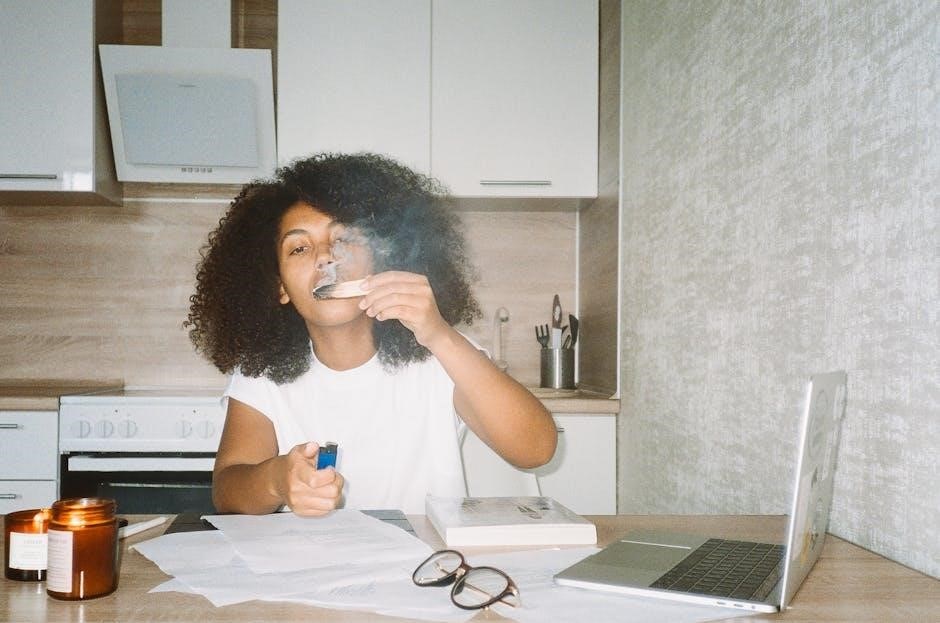
Tips for Applying Fragrances
Apply fragrances on pulse points for maximum impact. Moisturize skin before applying to enhance longevity. Spray lightly for subtlety or layer for intensity. Timing matters—morning for fresh scents, evening for richer ones.
6.1 Proper Application Techniques
Proper fragrance application enhances scent longevity and diffusion. Apply to pulse points like wrists, neck, and behind ears for optimal impact. Moisturize skin first to help fragrances linger. Use a light spray for subtlety or apply generously for intensity. Avoid rubbing wrists, as this can break down the fragrance molecules. For stronger concentrations like parfum, a small amount suffices. Timing matters too—apply in the morning for fresh, airy scents and in the evening for richer, deeper notes. Layering fragrances, such as using a matching body lotion, can amplify the scent. Reapply as needed, but sparingly to avoid overwhelming the senses.
6.2 Layering Fragrances
Layering fragrances involves combining complementary scents to create a unique, personalized aroma. Start with a base like a scented shower gel or body lotion, then apply your fragrance on top. This technique enhances longevity and depth. Choose scents within the same fragrance family, such as pairing floral notes with fresh citrus, for harmony. Avoid mixing opposing scents, like heavy musks with light florals, to prevent clashing. Layering can amplify the intensity of lighter concentrations like Eau Fraîche or Eau de Cologne. Experiment with different combinations to find your signature blend, but remember, less is more—overlayering can overwhelm the senses and diminish the appeal of the fragrance.
6.3 Reapplication Best Practices
Reapplying fragrance can refresh and prolong its scent, but timing and technique are key. For lighter concentrations like Eau Fraîche or Eau de Cologne, reapply every 2-3 hours to maintain the aroma. Heavier concentrations, such as Eau de Parfum or Parfum, may only need reapplication after 4-6 hours. Use a small amount each time to avoid overwhelming the senses. Apply to pulse points like wrists or behind the ears, where the scent can unfold naturally. Avoid overapplying, as it can lead to skin irritation or a cloying effect. For a subtle refresh, consider using a fragrance rollerball or spray lightly over clothing. Proper reapplication ensures the scent remains balanced and enjoyable throughout the day.
Understanding fragrance concentration enhances your scent experience, helping you choose the perfect strength for any occasion. Explore and enjoy the world of perfumery with confidence and precision.
7.1 Summary of Key Points
Understanding fragrance concentration is crucial for selecting the right scent for your needs. Concentration levels, such as Eau Fraîche, Eau de Cologne, Eau de Toilette, Eau de Parfum, and Parfum, vary in potency and longevity. Each type offers a unique experience, from lightweight, refreshing scents to rich, long-lasting aromas. Factors like essential oil percentage, skin type, and occasion influence concentration choices. Proper application techniques and layering can enhance fragrance performance. By considering personal preferences, seasonal variations, and budget, you can make informed decisions. Fragrance concentration is not just about strength but also about creating a personalized experience that aligns with your lifestyle and preferences. This guide provides a comprehensive roadmap to navigating the world of perfumery with confidence.
7.2 Final Thoughts on Fragrance Concentration
Fragrance concentration is a cornerstone of perfumery, shaping the way scents interact with your senses and environment. By understanding the differences between Eau Fraîche, Eau de Cologne, Eau de Toilette, Eau de Parfum, and Parfum, you can tailor your choices to suit your lifestyle, preferences, and occasions. Whether you prefer a subtle, refreshing aroma or a rich, long-lasting scent, the right concentration ensures a satisfying experience. Experiment with different types to discover what resonates with you, and remember that fragrance is a deeply personal journey. With this guide, you’ll navigate the world of perfumery with confidence, finding the perfect concentration to enhance your everyday moments.
